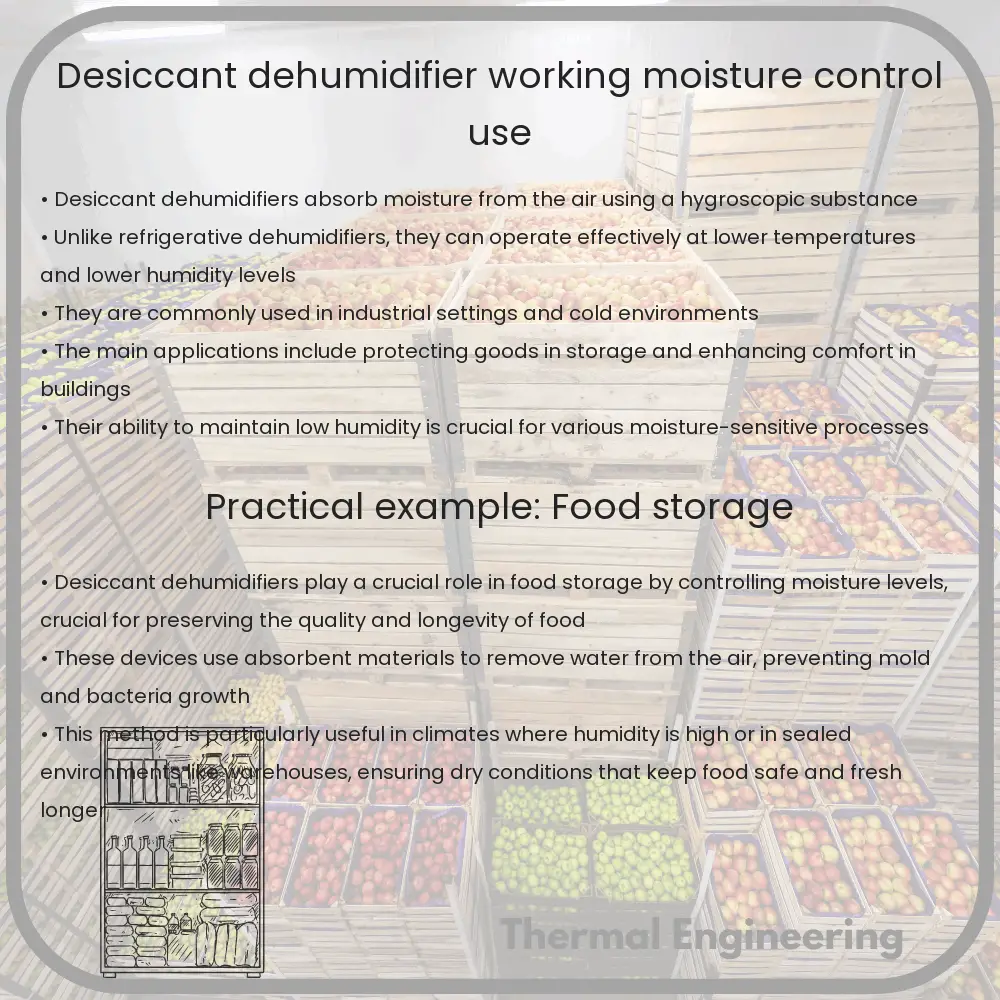Learn about desiccant dehumidifiers, essential for moisture control in various environments, differing from traditional dehumidifiers by using absorbent materials.

Understanding Desiccant Dehumidifiers
Desiccant dehumidifiers are vital tools used extensively in various industries and residential settings to control humidity, protect goods from moisture damage, and improve comfort levels. These devices differ from conventional refrigerative dehumidifiers because they use a desiccant material to absorb moisture from the air directly.
How Desiccant Dehumidifiers Work
Desiccant dehumidifiers operate based on a simple yet effective principle. They are equipped with a desiccant material, often silica gel or molecular sieves, which has a high affinity for water vapor. The operation of a desiccant dehumidifier can be divided into two primary cycles: adsorption and regeneration.
- Adsorption: During this phase, humid air is drawn into the dehumidifier through a duct. As the air passes through, it comes into contact with the desiccant material. The desiccant material adsorbs the moisture from the air, and the dried air is then released back into the room or the designated dry area.
- Regeneration: To continue efficiently absorbing moisture, the desiccant must be dried or “regenerated. This is typically achieved by heating the desiccant, which releases the captured moisture into a separate air stream. This moist, warm air is then vented outside the area being dried.
Desiccant dehumidifiers can operate effectively at lower temperatures and lower humidity levels compared to refrigerative types, as their performance is not reliant on dew point temperature.
Moisture Control and Adjustability
The efficiency of desiccant dehumidifiers in moisture control is one of their standout features. They can reduce the humidity to much lower levels than refrigerative dehumidifiers. This capability makes them ideal for environments where maintaining a specific, low humidity level is crucial, such as in pharmaceutical production, food storage, or ice rinks.
These units commonly feature humidity controls that allow users to set a desired humidity level. Once the ambient humidity reaches the set point, the dehumidifier can cycle off, conserving energy and reducing wear on the desiccant material.
Common Uses of Desiccant Dehumidifiers
- Industrial Applications: Desiccant dehumidifiers are widely used in manufacturing processes where moisture needs to be strictly controlled to prevent product degradation, clumping, or other quality issues.
- Water Damage Restoration: These devices are critical in environments affected by water damage as they can quickly and effectively dry out wet areas, preventing the growth of mold and mildew.
- Storage Solutions: They are used in storage facilities, particularly for delicate items such as electronics or artwork that are sensitive to moisture.
- HVAC Systems: Integrated into heating, ventilation, and air conditioning systems, desiccant dehumidifiers help in maintaining comfort levels and avoiding condensation problems in buildings.
In conclusion, desiccant dehumidifiers play a crucial role in various applications by efficiently controlling moisture levels in the air. Their ability to function effectively under a broad range of conditions, coupled with precise humidity control, makes them indispensable in many industrial and residential scenarios.